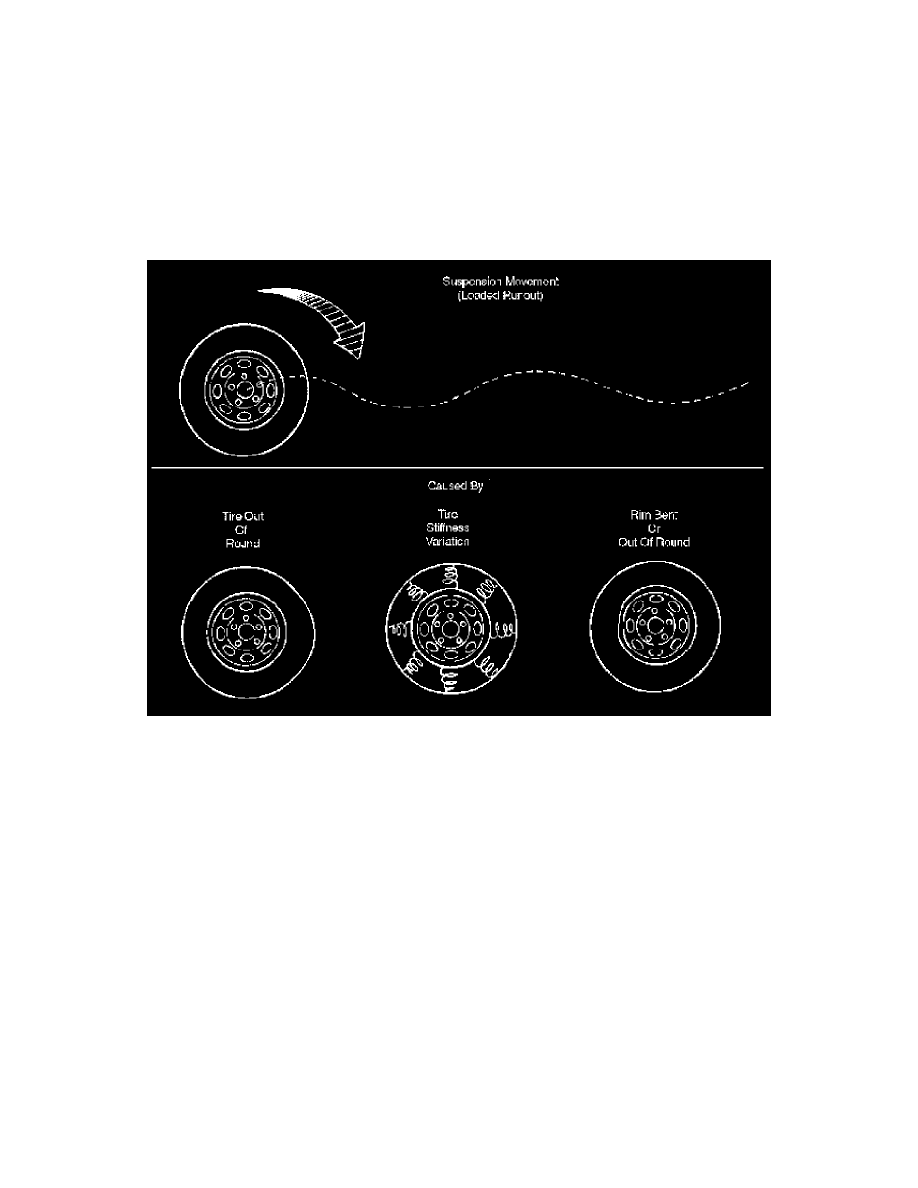Forenza L4-2.0L (2004)

Tires: Symptom Related Diagnostic Procedures
Vibration Diagnosis
Wheel imbalance causes most highway speed vibration problems. A vibration can remain after dynamic balancing because:
^
A tire is out of round.
^
A rim is out of round.
^
A tire stiffness variation exists.
Measuring tire and wheel free runout will uncover only part of the problem. All three causes, known as loaded radial runout, must be checked using
method of substituting known good tire and wheel assemblies on the problem vehicle.
Low-speed vibrations, which occur below 64 km/h (40 mph), are usually caused by runout. High speed vibrations, which occur above 64 km/h (40
mph), can be caused by either imbalance or runout.
Preliminary Checks
Prior to performing any work, always road test the car and perform a careful visual inspection for:
^
Obvious tire and wheel runout.
^
Obvious drive axle runout.
^
Improper tire inflation.
^
Incorrect trim height.
^
Bent or damaged wheels.
^
Debris build-up on the tire or the wheel.
^
Irregular or excessive tire wear.
^
Improper tire bead seating on the rim.
^
Imperfections in the tires, including: tread deformations, separations, or bulges from impact damage. Slight sidewall indentations are normal and
will not affect ride quality.
Tire Balancing
Balance is the easiest procedure to perform and should be done first if the vibration occurs at high speeds. Do an off-vehicle, two-plane dynamic
balance first to correct any imbalance in the tire and wheel assembly.
An on-vehicle finish balance will correct any brake drum, rotor, or wheel cover imbalance. If balancing does not correct the high-speed vibration, or if
the vibration occurs at low speeds, runout is the probable cause.
Runout
Runout can be caused by the tire, the wheel, or the way the wheel is attached to the vehicle. To investigate the possibility of wheel runout, refer to the
following procedures as well as the wheel runout diagnosis chart:
1. If runout is suspected, measure the on-vehicle free lateral and free radial runout of the tire and wheel assembly. Both the free lateral and the free
radial runout should be less than 1.5 mm (0.06 inch). If either measurement exceeds this number, proceed to Step 2.
2. Mount the tire and the wheel on a dynamic balancing machine and remeasure the free lateral and the free radial runout. Record the amount of the
